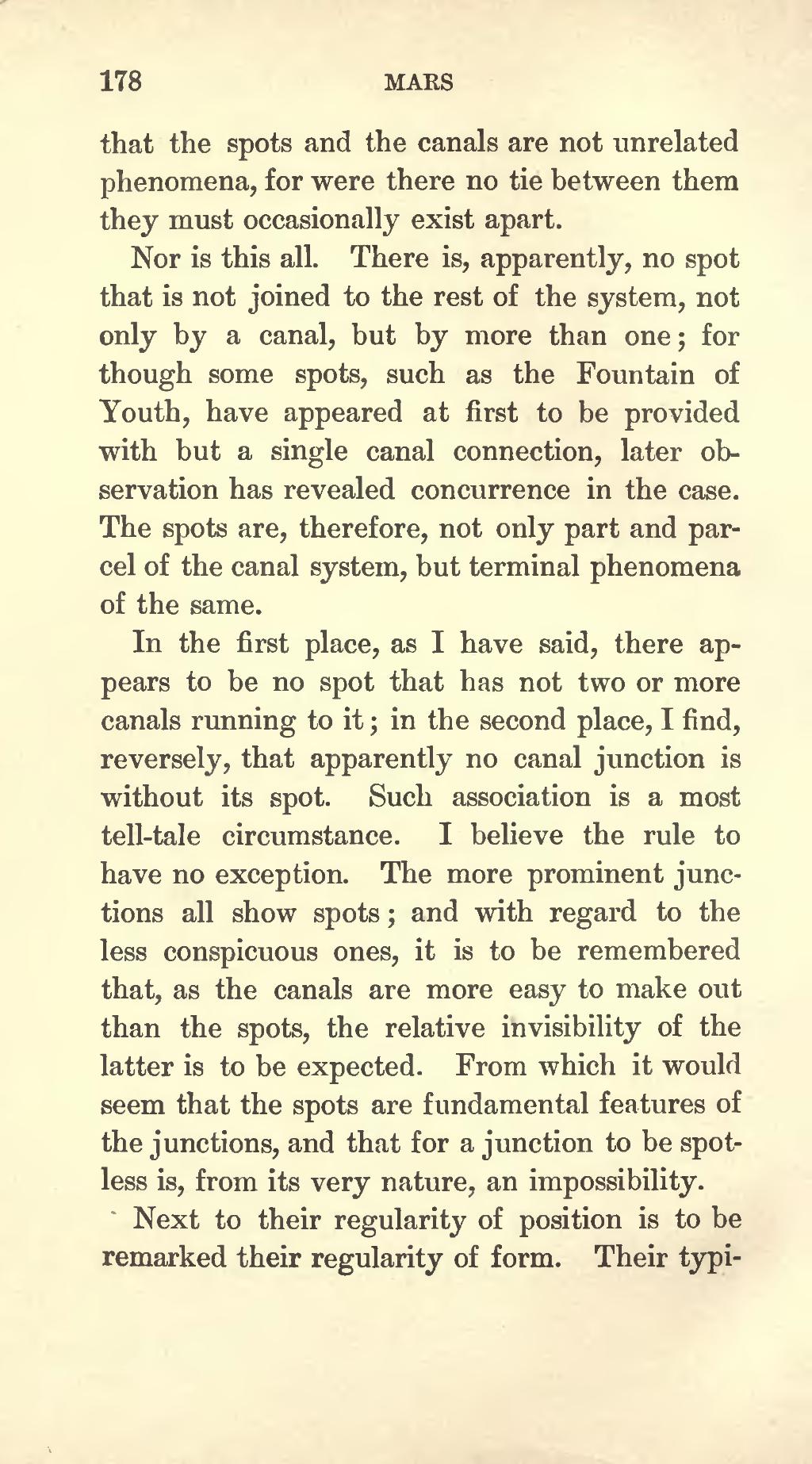that the spots and the canals are not unrelated phenomena, for were there no tie between them they must occasionally exist apart.
Nor is this all. There is, apparently, no spot that is not joined to the rest of the system, not only by a canal, but by more than one; for though some spots, such as the Fountain of Youth, have appeared at first to be provided with but a single canal connection, later observation has revealed concurrence in the case. The spots are, therefore, not only part and parcel of the canal system, but terminal phenomena of the same.
In the first place, as I have said, there appears to be no spot that has not two or more canals running to it; in the second place, I find, reversely, that apparently no canal junction is without its spot. Such association is a most tell-tale circumstance. I believe the rule to have no exception. The more prominent junctions all show spots; and with regard to the less conspicuous ones, it is to be remembered that, as the canals are more easy to make out than the spots, the relative invisibility of the latter is to be expected. From which it would seem that the spots are fundamental features of the junctions, and that for a junction to be spotless is, from its very nature, an impossibility.
Next to their regularity of position is to be remarked their regularity of form. Their typi-

